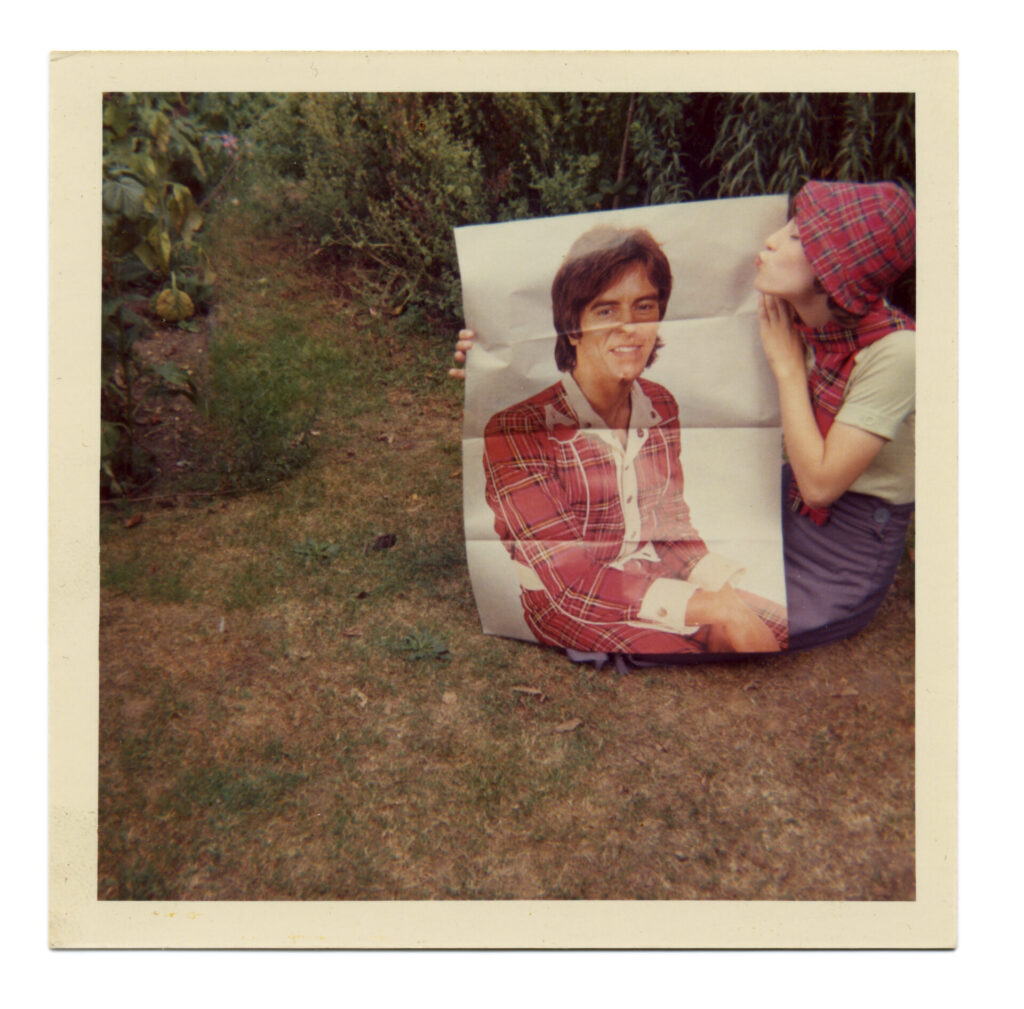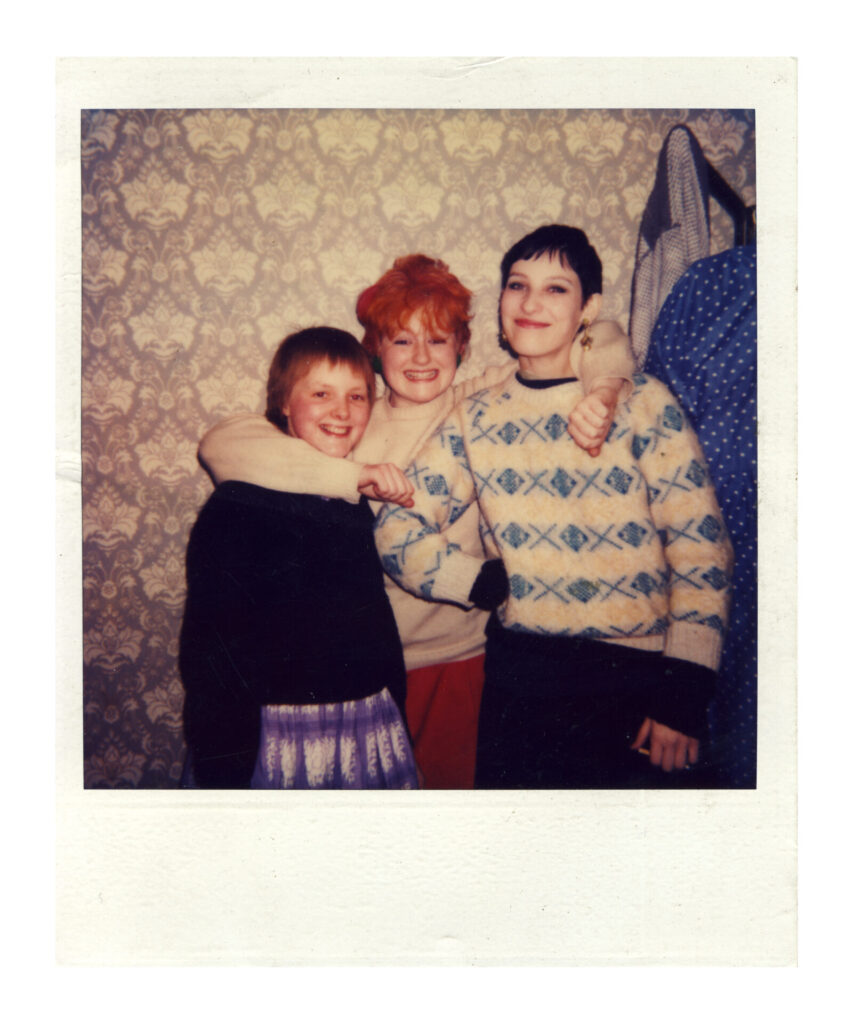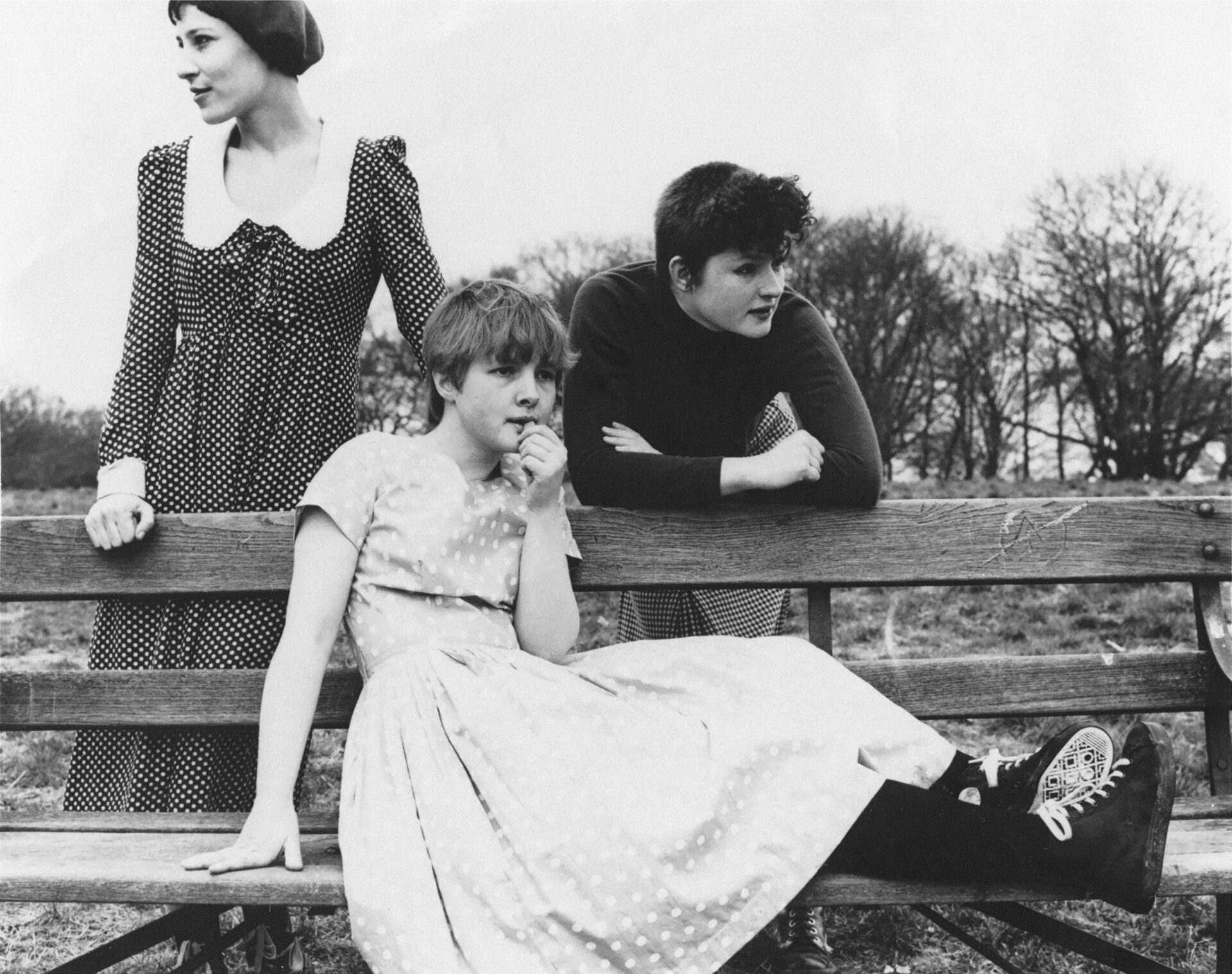Dolly Mixture: a best kept pop secret, a charmed existence.They were the band that handed The Undertones a tape after a gig and minutes later were invited to open for them the following night leading to a support slot on the tour. They were one of the first signings to Paul Weller’s Respond label. They had U2 open for them twice, and were the backing singers on Captain Sensible’s #1 single ‘Happy Talk’. Despite the impressive CV, being an artist hits different when you’re on the inside – when great songs, hundreds of gigs, and being lauded by popstars doesn’t bring record deals or the money to keep it all going.
In Teenage Daydream: We are the Girls Who Play in a Band, singer/bassist Debsey Wykes shines a light on the many faceted prism that was Dolly Mixture’s bid for pop stardom. Not shying away from the fickle and harsh realities of the music industry – especially towards an all-female band in the late 70s/early 80s – the Dolly Mixture story is one of a certain innocence that would see them through six years of being criminally overlooked by the mainstream. Wykes, Hester Smith (drums), and Rachel Bor (guitar/vocals) possessed a combination of self-belief and guilelessness that enabled them do things like walk right up to John O’Neill of The Undertones with a tape after a Cambridge Corn Exchange gig they hadn’t even been able to get into. Or head down to London one day to talk to labels about signing them without even calling ahead first. Stories like these abound in the pages of Teenage Daydream. It’s a tale of optimism mixed with inexperience – though one wouldn’t say naivety, as they quickly learned their craft and fought hard to bring it to the world. They played 190 gigs in 1981 alone.
“Having gone over it again and again for the book, I actually think that some of it was charmed,” Wykes agrees. “In a way, it was because we were born at that particular time and so were able to do what we could do at that moment. Then of course things were thrown at us and there were lots of insults as the years went by. But we had a charmed start, definitely, and things happened that seemed like a storybook. We were wrapped up in it. It was just band, band, band. And it was innocence, especially, that kept me going. You fear the worst and constantly hope for the best, so you’re forever being thrown between two extremes. Never feeling just quite happy. You’re always yearning or thinking, ‘what else can I do that will make this feel better?’ It’s feverish.”
Dolly Mixture made timeless pop calling up a big 60s sense of melody and harmony delivered in a sparse punk-inspired guitar/bass/drums format. But besides their lucky breaks and the songs themselves, part of the charm comes from seeing their youthful gropings for success. Wykes recalls how the band practised the fade-out to their song ‘Divided By A Wall’ before going into the studio for the first time, not realising this would be done on the mixing board. There’s footage of the band busking The Crystals’ ‘Da Doo Ron Ron’ and Wykes confirms they would often busk to get their train fare home and money to eat. “Rachel would have an acoustic guitar and we’d do songs with a couple of vocals so that we could all sing. It’s an extraordinary memory, thinking of all those people coming down the Tube steps and walking past us. All the commuter clothing, so dark, grey, and grim. And Rachel would have these brilliant big, red stacked heel platform boots on.”

Fashion also plays a big role in Teenage Daydream, the importance of getting their look the way they wanted it. Details are given on outfits worn to gigs – not just their own – and other occasions, such as going into Cambridge’s Spaceward Studios “in full Dolly Mixture finery: spotty dresses and pinafores with colourful leggings and stripy tights, platform shoes and boys’ boots.” And Wykes doesn’t keep the sartorial descriptions solely to the band, when others enter the story they usually do so accompanied by an account of their attire. “Fashion was so important to us, absolutely our world. It was always a way of expressing ourselves, part of our energy. Nobody had any money so we just bought scraps and scraps of material and made our own. There weren’t any clothes to buy anyway, because we didn’t like them. Though we were criticised all the time for what we looked like.”
While Wykes recalls pop being “everywhere” when she was growing up, and writes of early obsessions with the Bay City Rollers and David Bowie, by her teenage years she was into a decidedly heavier sound. “I remember a boy coming up to me at a party and asking ‘what do you like?’ and I said ‘Deep Purple’. He shook his head, ‘Oh you’ve got a lot to learn. Don’t you like soul?’ and I said ‘Well, sure’. But I didn’t really know much.”
There’s a surprising admission in Teenage Daydream where Wykes recounts first listening to Motown after a friend commented that Dolly Mixture songs sound like those produced by the classic Detroit label. More remarkable still is that it was neither Bowie nor any other glam act but Jimmy Page who inspired her to pick up an instrument. Though Wykes emphatically states she doesn’t listen to Led Zeppelin or much hard rock these days. “It just makes me feel sort of… tired. I listened to them too much when I was young, because you’d tend to put on an album three times in a row with your headphones on. I can sort of see why I might’ve liked them but all that music just passes me by. I find it quite depressing. But it was inspiring at the time. The idea of holding this instrument and making a colossal noise. I really needed to make a loud noise. You’ve got power then.”

The idea of writing the book had been kicking around Wykes’ head for some time. “I was originally going to call it ‘1982’, and I thought I’d write about a year, and then go backwards and forwards, a bit like it actually does. Plus it would be a little play on [George Orwell’s] Nineteen Eighty-Four. And then I thought oh, I’ll actually call it ‘1984’ because that was the last year of our live existence as a band. I could go back in time and also not have to figure out how I was going to bring the future into it as well. I’ve always wanted to write a book. And I really wanted to make it interesting for myself. That time of your life makes up so much of what you go on to do. Certain attitudes and things. Formative experiences. It was really important to us at the time, and I wanted to make sure nobody forgot that we were there. We do get forgotten in history, so I wanted to put us back on the map.”
Earlier this year, at the launch party for Pete Paphides’ Sensitive: An Indie Pop Anthology, Wykes joined Rachel Love (née Bor) to perform ‘Will He Kiss Me Tonight’. But although the band never officially broke up, a Dolly Mixture reunion of any sort is not on the cards. “That was a one-off, a special occasion. It’s more precious as it was, you know, that’s what we were. And the music is what the music is. I might get up and sing some backing vocals if Rachel plays, but I don’t think we could recreate Dolly Mixture.” She laughs, “That would be daft.”
Teenage Daydream: We are the Girls Who Play in a Band by Debsey Wykes is published by New Modern


